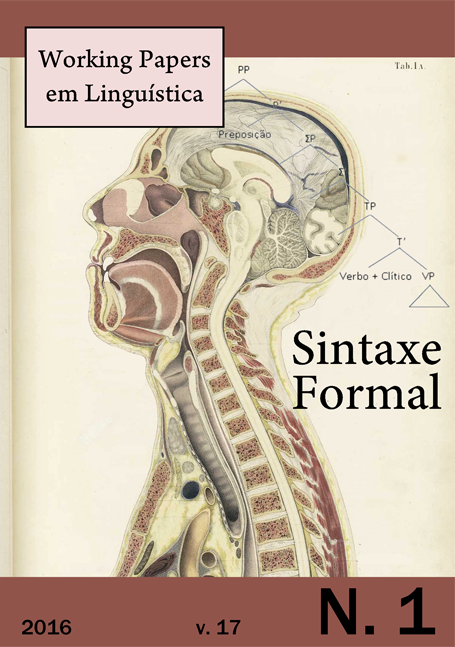Deontic orientation of the modal “poder” meaning permission in different structures: ought-to-be deontics evidence
DOI:
https://doi.org/10.5007/1984-8420.2016v17n1p168Abstract
http://dx.doi.org/10.5007/1984-8420.2016v17n1p168
The proposals of Kratzer (1981, 2012) and Cinque (1999, 2006) have been reference in auxiliaries modal study, and differ, fundamentally in relation to consider these cores as polysemic or ambiguous. The Hacquard’s (2006) proposal reconciling these views, postulating that a modal has only one lexical entry, however, a modal can receive different interpretations from the position in which it is interpreted in the sentence. The epistemic correspond to the high modals, that accessing the speech act and are oriented to the speaker; and deontics are low modals, that accessing the main event and are oriented to the subject of the sentence. Pires de Oliveira e Rech (2016), based on works such as Feldmann (1986) and Brennan (1993), concluded that the modal deontic 'deve' can be interpreted in different positions in the sentence and can access both the main event (VP), being guided to the sentence subject, as the act of speech, being guided to the addressee. These authors consider that, the deontic modal must check the +Ag feature with one of the participants of the event on which the modal operates. Taking this proposal as reference, this paper analyzes the orientation of the modal 'poder' in different structure. The main hypothesis is that the deontic interpretation of permission can only fall on the sentence subject if there is an agentive participant in the embedded event, otherwise falls on the addressee, thus corresponding to a high deontic, admitting interpretation of permission only if it falls on the addressee.
Downloads
Published
Issue
Section
License
Copyrights belong to the authors, who allow the Working Papers em Linguística journal to publish their work. Total or partial reproduction requires the Editorial Board's authorization. Names and adresses in this website are exclusively used for the journal's purposes and are not available for other purposes and/or third parties.
![]()
This publication is licensed under Creative Commons - Attribution-NonCommercial - 4.0 International.


